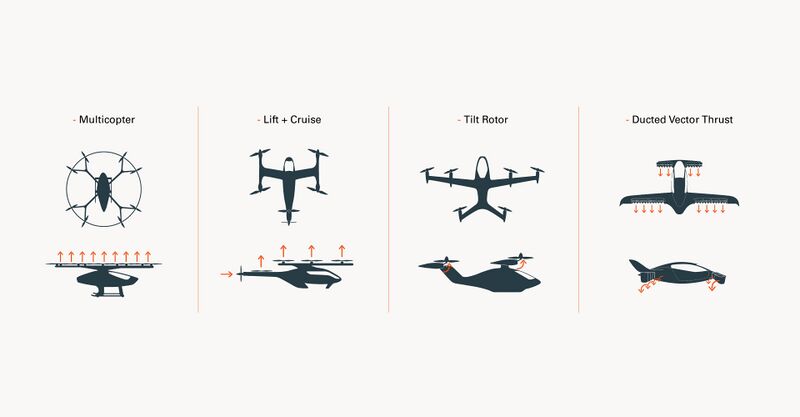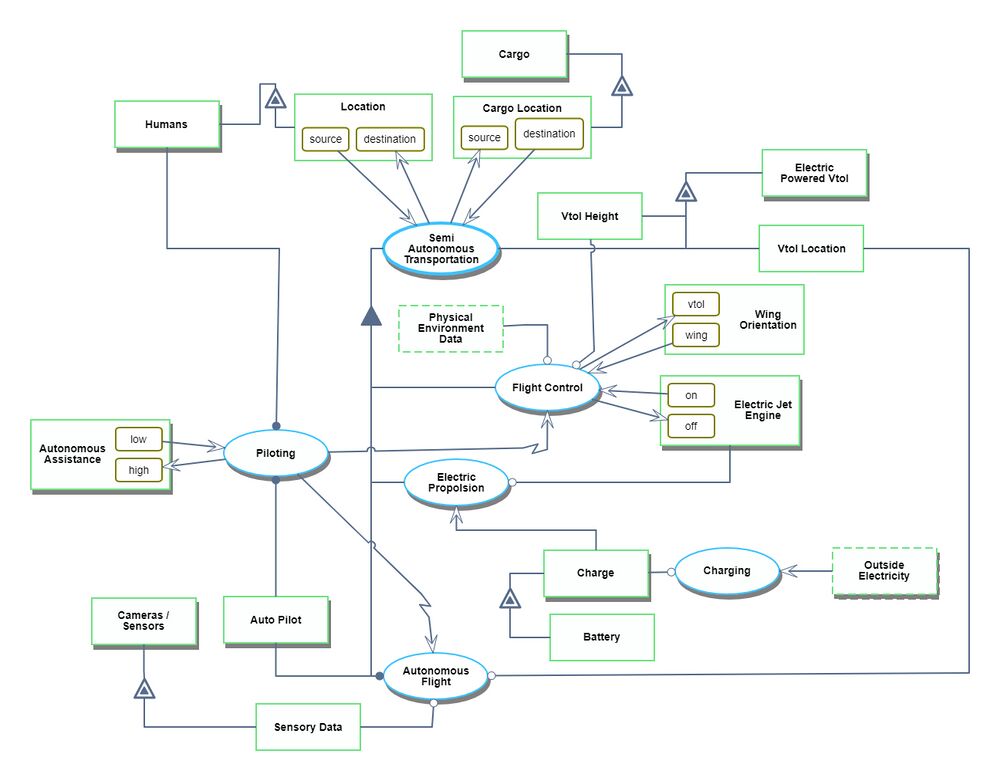Difference between revisions of "WorldWide eVTOL"
| Line 35: | Line 35: | ||
*'''Cost per passenger''' mile ($/km) | *'''Cost per passenger''' mile ($/km) | ||
*'''Disc Loading''' kg/m2 | *'''Disc Loading''' kg/m2 | ||
*'''Cruise speed'' (km/hr) | *'''Cruise speed''' (km/hr) | ||
*'''Max payload'' (kg) | *'''Max payload''' (kg) | ||
*'''Passenger seating''' (pax) | *'''Passenger seating''' (pax) | ||
Revision as of 16:42, 1 October 2020
Technology Roadmap Sections and Deliverables
The first point is that each technology roadmap should have a clear and unique identifier:
- 2EVL Eletric Vertical take off and Landing
This indicates that we are dealing with a “level 2” roadmap at the product level (see Fig. 8-5), where “level 1” would indicate a market level roadmap and “level 3” or “level 4” would indicate an individual technology roadmap.
Roadmap Overview
Enter description of the technology here:
The VTOLs that use the same propulsion system for hover and forward flight can rotate the direction of the thrust in different ways. The tail-sitters rotate the entire aircraft. They are conceptually simple but difficult and risky to control. The Harrier configuration is called vectored thrust because it can orientate mechanically the direction of the thrust. The tilt-wings rotate the entire wing, the engines and the propellers as a single piece. Rotating the wing in hover avoids the impinging of the propeller slipstream on it, a problem that reduces the thrust in the hover of tiltrotors. The lift produced by the wing is augmented, at high angles of attack, by the blowing effect of the propellers.
Lilliumjet, architecture design principles
Design Structure Matrix (DSM) Allocation
The 2-EVL tree that we can extract from the DSM above shows us that the eVTOL (2EVL) is a solution to larger more fuel efficient methods of urban mobility (1LUM), and requires the following major subsystems: 3INT Interior, 3LHI Landing and Handling Infrastructure, 3EGM Energy Management, 3POP Propulsion, and 3NAV Navigation. These require the following level four component technologies: 4BAT Battery, 4CHG Charging Station, 4ELM Electric Motor, 4FAN Fan or Propeller, 4SEN Sensors, 4APT Auto-pilot and 4FCP Flight Computer.
Roadmap Model using OPM
We provide an Object-Process-Diagram (OPD) of the 2EVL roadmap in the figure below. This diagram captures the main object of the roadmap (eVTOL), its various instances including main competitors, its decomposition into subsystems (wing, flight-control, autonomous control, electric propulsion), its characterization by Figures of Merit (FOMs) as well as the main processes (hovering, wing tilt).
An Object-Process-Language (OPL) description of the roadmap scope is auto-generated and given below. It reflects the same content as the previous figure, but in a formal natural language.
Figures of Merit
The table below show a list of FOMs by which electric VTOL can be assessed. The first two and the last two are used to assess the aircraft itself. They are very similar to the FOMs that are used to compare traditional aircraft which are propelled by fossil fuels, the big difference being that 2EVL is essentially emissions free during flight operations. The other rows represent subordinated FOMs which impact the performance and cost of eVTOL but are provided as outputs (primary FOMs) from lower level roadmaps at level 3 or level 4, see the DSM above.
- Hover Efficiency (kg/kw)
- Energy per mile (km/kwh)
- Cost per passenger mile ($/km)
- Disc Loading kg/m2
- Cruise speed (km/hr)
- Max payload (kg)
- Passenger seating (pax)


